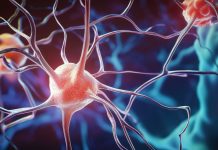Dr Daniela Tonucci, a consultant for over 10 years, talks us through the use of cannabinoids as pain medicine
Potential uses for cannabinoids are vast and extend across a wide range of clinical conditions. These include chronic pain conditions, especially neuropathic pain, which degrades physical and mental health more than other forms of pain. There is also evidence for their use in spasticity, in multiple sclerosis, and in other pain conditions such as fibromyalgia and chronic migraine. However, their use extends beyond pain conditions, reducing nausea and vomiting caused by chemotherapy, in treating sleep disorder and in reducing anxiety. There has also been therapeutic effect in the treatment of intractable epilepsy in children. There is some benefit for use in treating chronic fatigue, Parkinson’s disease symptoms and in the treatment of bipolar disorders.
I am a Consultant in pain medicine and have been for over 10 years. In that time, I’ve witnessed an opioid crisis with limited new therapeutic treatments available to treat chronic pain. The estimated prevalence of chronic pain in the UK is 43%. This equates to just under 28 million people.
To understand why their potential use is so widespread we need to understand their action on the endocannabinoid system.
The endocannabinoid system
The endocannabinoid system is our endogenous cannabinoid receptors. There are CB1 and CB2 receptors and possibly CB3 receptors. They have effect on neural function including memory, motor control, pain modulation, thermoregulation, as well as sleep, appetite, social behaviour and anxiety. Activity of these receptors will, therefore, affect a range of neural systems. This is further complicated by the different active ingredients within the cannabinoids, CBD and THC, that may affect different sites and therefore different active ingredients may potentially be beneficial for different medical conditions.
The two main potential active ingredients are CBD and THC. There is widespread use of CBD products in the management of chronic pain. CBD is anatagonistic at the CB1 and CB2 receptors and it has potential action as anti-inflammatory, anti-epileptic, anxiolytic, antipsychotic, and neuroprotective. It has minimal if any side effects. It is a wellness product in the form of an oil, a spray, topical balms and creams, and infused in food. It may be helpful in fibromyalgia, chronic fatigue, anxiety, inflammatory disorders, mild chronic pain and post-cancer fatigue.
THC
THC is the psychoactive component in cannabinoids. It has good analgesic effect, it is anti-pruritic, anti-inflammatory and anti-emetic.
CBD and THC are synergistic and it may be that either alone is not beneficial and so titrating dose of CBD and adding in THC may lead to better benefit than CBD alone, especially in the treatment of chronic pain.
The evidence of benefit is good, moderate or weak for different medical conditions. It is good for chronic pain, particularly neuropathic pain, but also for cancer pain, post-surgical pain, migraine and arthritis. It may also be opioid-sparing. The evidence is good in MS spasticity with NICE approval for its use for this, and potentially in spinal cord injury. There is good evidence in reducing chemotherapy-induced nausea and vomiting. There is good evidence of benefit in reducing intractable epilepsy in children, mainly epidiolex reducing seizure frequency by 50%. There is also good evidence of CBD reducing anxiety disorders. There is moderate evidence for benefit in fibromyalgia, sleep disorders, PTSD and appetite stimulation in HIV patients. There is weak evidence of benefit in improving Parkinson symptoms, agitation in dementia, and bladder disorders.
Whilst cannabinoids are not a cure and may require long term use, their side effects are minimal and in combination with other treatment modalities they have the potential to improve quality of life. They may be helpful in reducing multiple symptoms in chronic complex disease.
Dr Daniela Tonucci is an expert involved in the Cannaray scientific advisory board.











